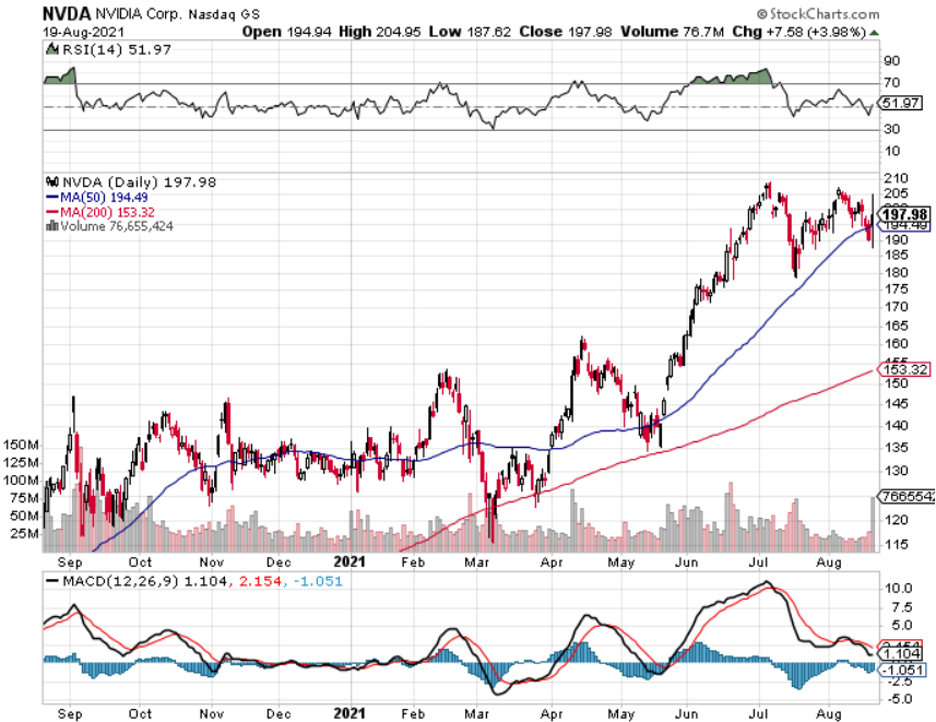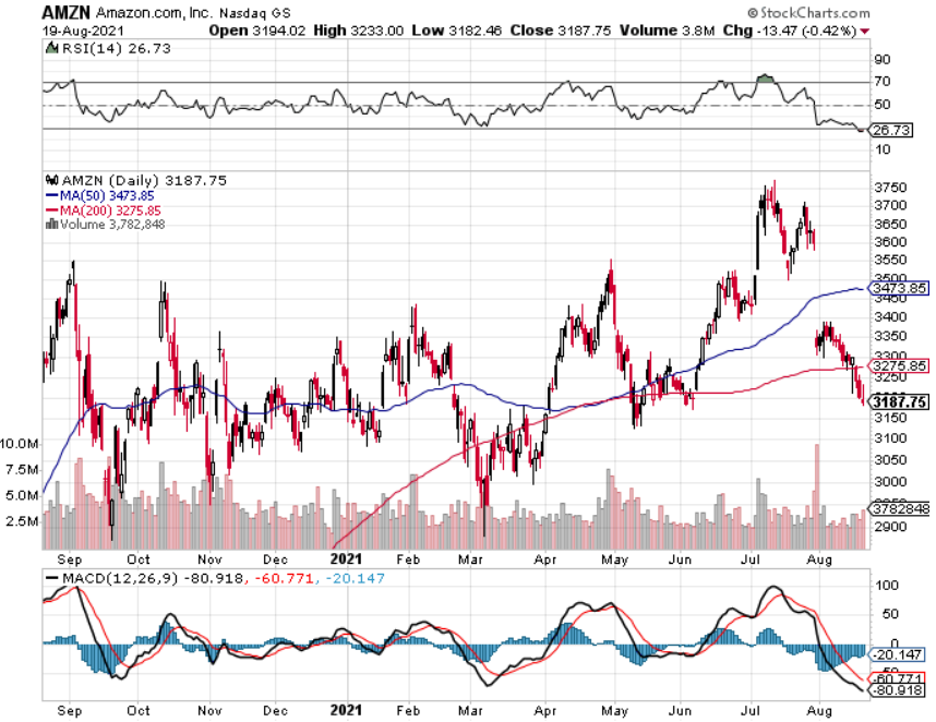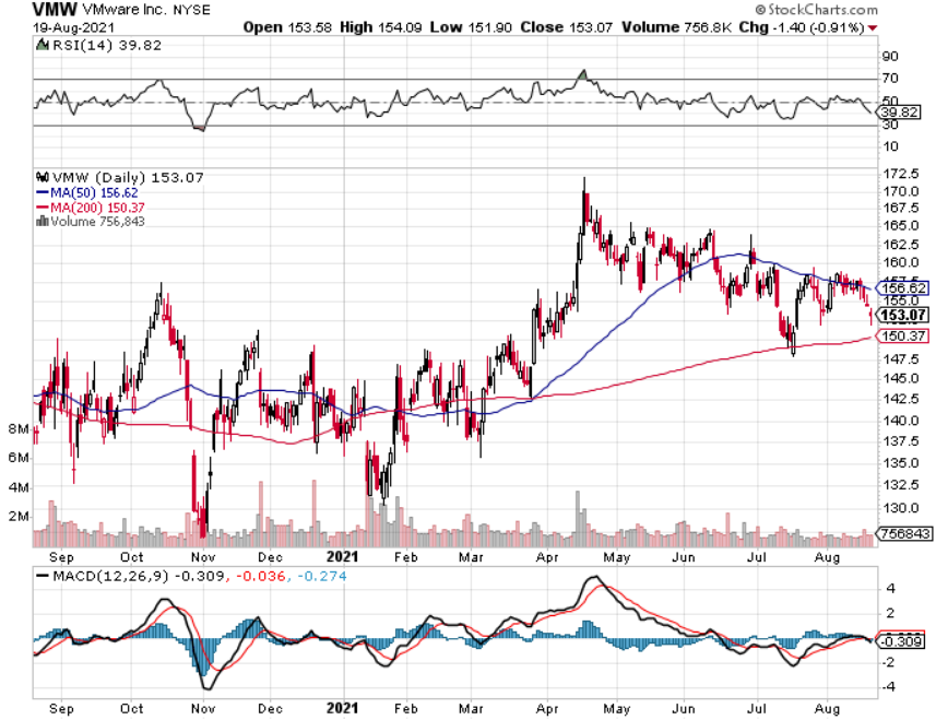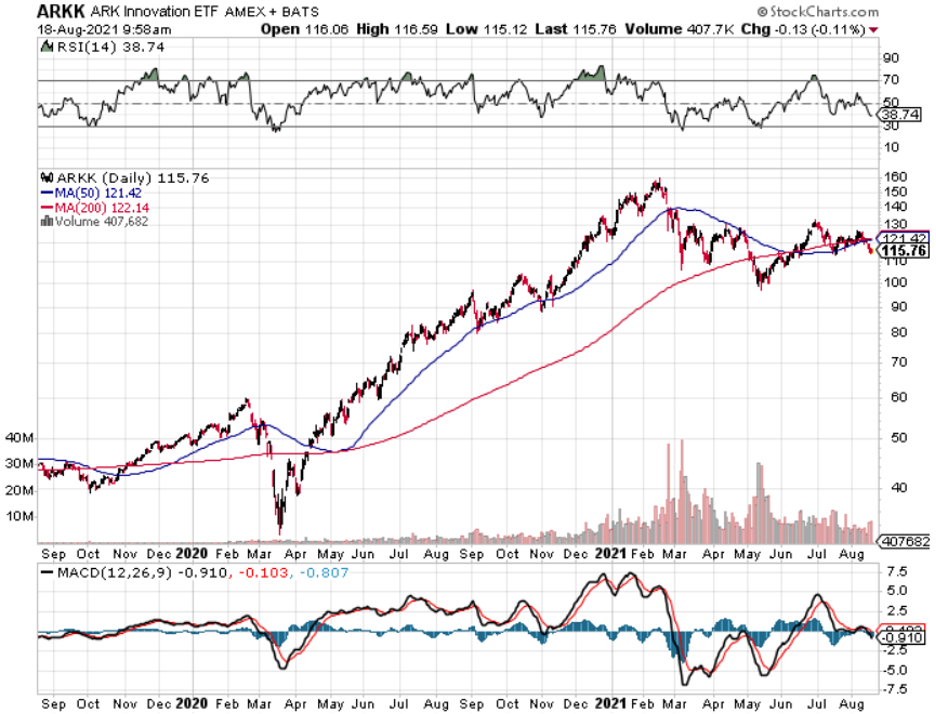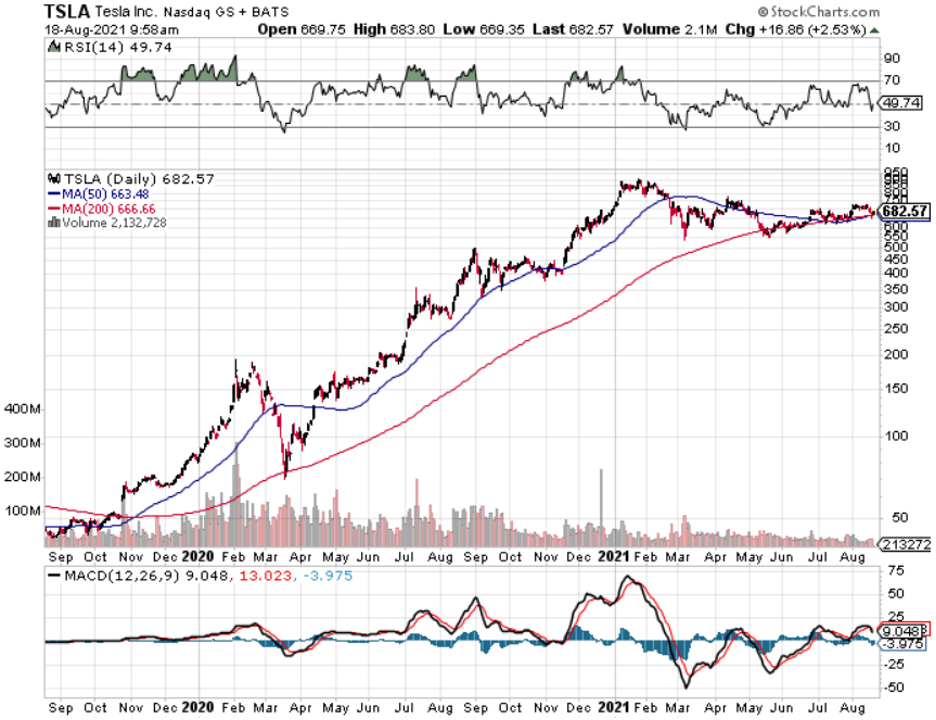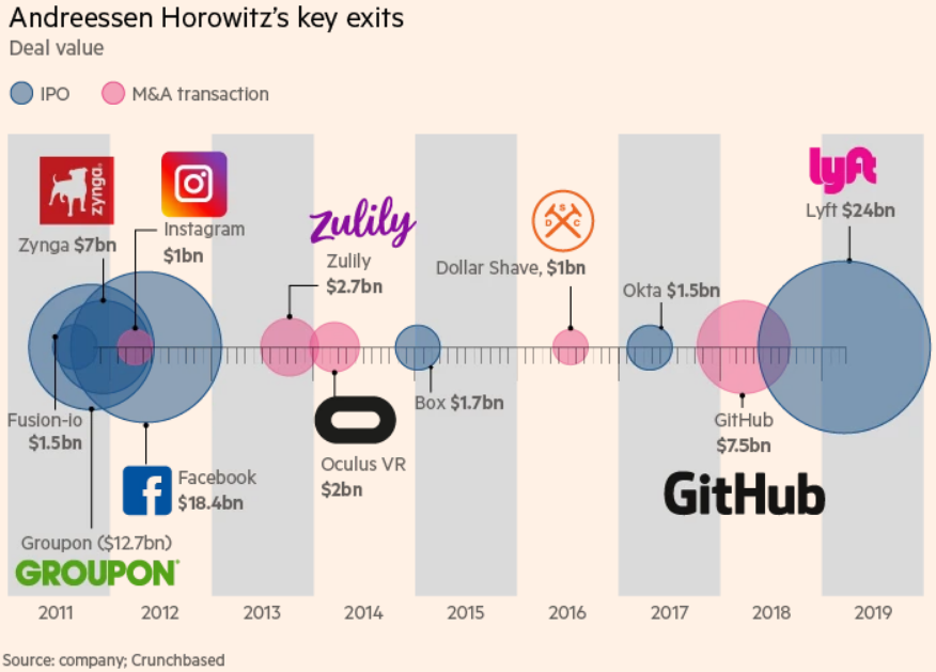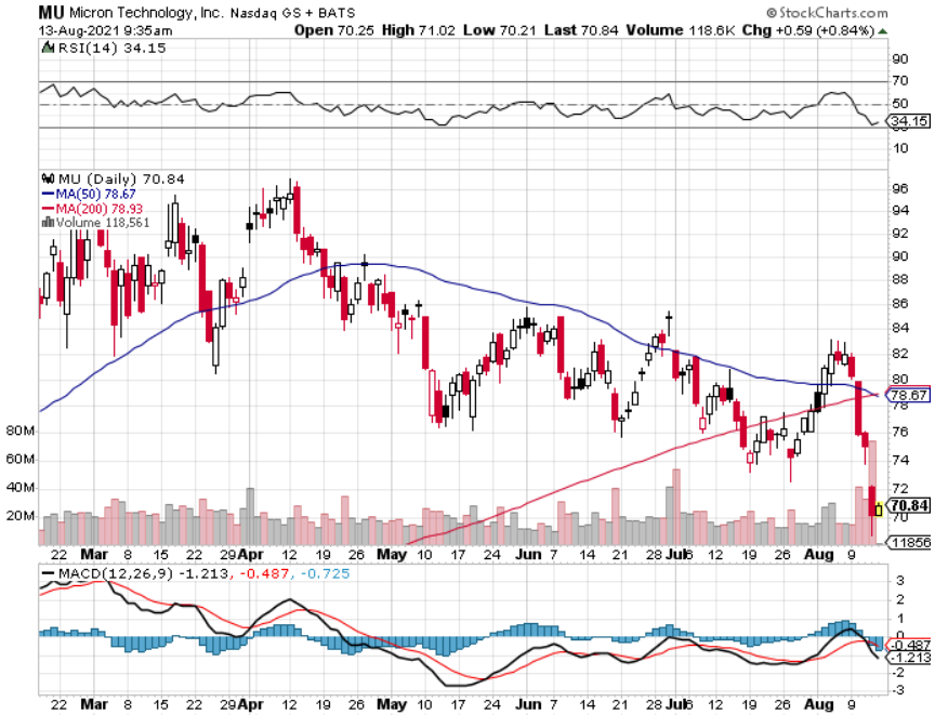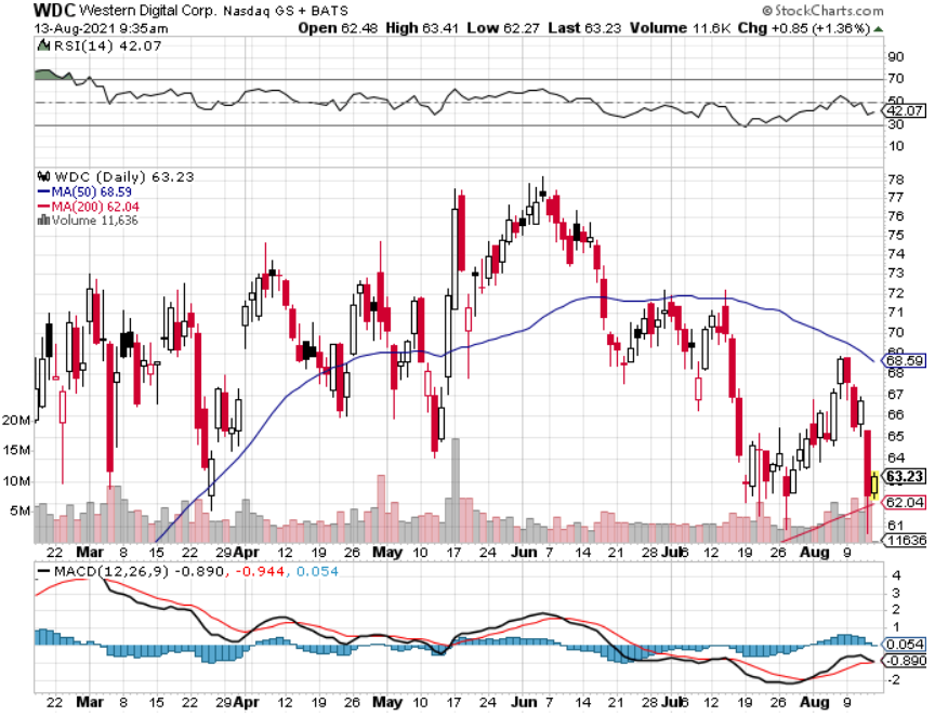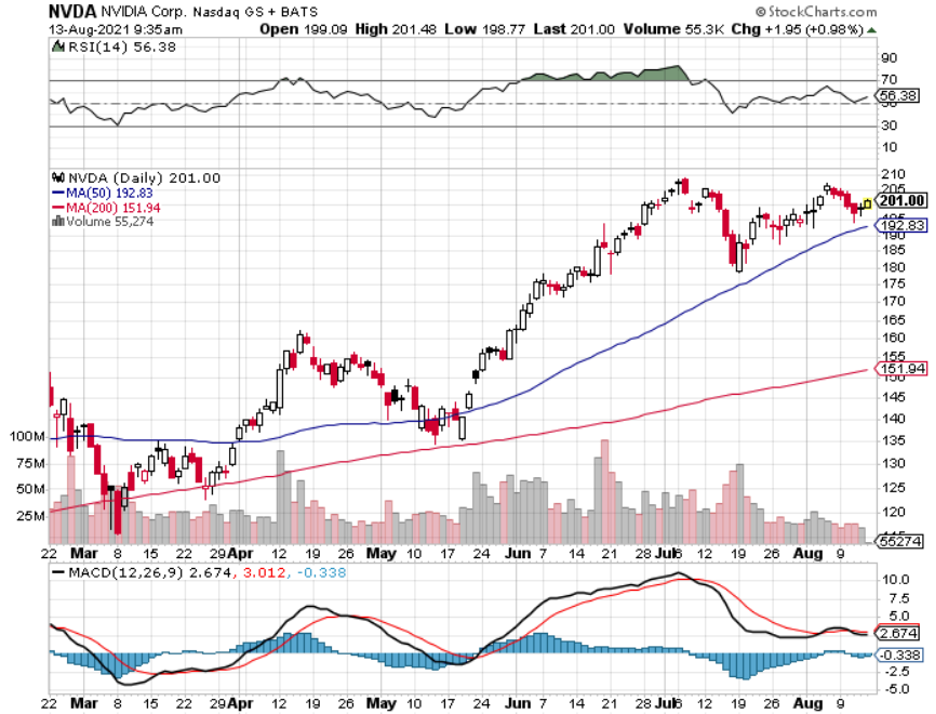A can’t-miss stock in technology investing has to be Nvidia (NVDA).
We got confirmation from the latest earnings report that they are still too hot to handle.
Sure, the bulk of revenue still mostly comes from gaming, but gaming is still a secular growth driver.
They had another strong quarter overall, with revenue of $6.5 billion and year-on-year growth of 68%.
They set new records for total revenue as well as for Gaming, Data Center, and Professional Visualization.
The pandemic minted a fresh wave of new gamers which has been a generous gift to an already robust company.
The audience for global eSports will soon approach 0.5 billion people, while the number of those who live stream games is expected to reach over 700 million.
Meanwhile, the number of PC gamers helps set the stage for a new audience that will help drive Nvidia’s future products.
Gaming, with revenue of $3.1 billion, was up 11% sequentially and up 85% from a year earlier.
Demand remained exceptionally strong, outpacing supply.
Nvidia has two powerful new GPUs for gamers and creators, the GeForce RTX 3080 Ti and RTX 3070 Ti, delivering 50% faster performance than their prior generation with acclaimed features such as real-time ray tracing, and AI Rendering.
Laptop demand was another blistering division that was again helped by the importance of quality devices in a locked-down world.
From the top-of-the-line gaming laptops to those through mainstream price points as low as $799 that brings the power of GeForce CPUs to gamers, the entire range of products was in high demand.
Highlighting Nvidia’s stranglehold at the cutting edge of technology and the future is its developments in the self-driving sphere.
In autonomous trucking, DRIVE ecosystem partner, Plus, signed a deal with Amazon (AMZN) to provide at least 1,000 self-driving systems to Amazon's fleet of delivery vehicles.
The systems are powered by NVIDIA DRIVE for high performance, energy-efficient and to take advantage of its centralized AI computer.
An autonomous trucking start-up, Embark, is building on NVIDIA DRIVE.
The system is being developed for trucks for four major auto manufacturers representing the vast majority of largest size trucks in the US.
The NVIDIA DRIVE platform is being rapidly adopted across the transportation industry from passenger-owned vehicles to rob taxis, to trucking and delivery vehicles.
The goal is to get Nvidia products in everything that autonomously moves one day, a big goal, but I have seen crazier things come to fruition.
Nvidia expanded AI software and subscription offerings make it easier for enterprises to adopt AI from the initial development stage through to deployment and operations.
The enterprise continues to be a core set of Nvidia’s operations.
In the Enterprise, the application that is driving AI is that every enterprise must move toward being a tech company, take advantage of connected clouds, connected devices, and artificial intelligence to achieve it.
Nvidia just helps facilitate the opportunity to deploy AI services out of the edge.
And in order to do so, there are several things that have to happen; first, they have to create a computing platform that allows them to do training in the IT environment that they understand, which is a virtualized, which is largely managed by VMware (VMW).
And Nvidia’s collaboration with VMware is creating a new type of system that could be integrated into the enterprise that has been quite a significant effort and it's in volume production today.
The second is a server that allows the enterprise customers to deploy their AI models out to the edge.
The AI engine through software suite that they’ve been developing over the last 10 years now has been integrated into this environment and allows the enterprises to basically run AI out of the box.
Putting all of the state-of-the-art AI solvers and engines and libraries that Nvidia has industrialized and refined over the years, are all available to anyone that signs up for an Enterprise license.
The largest eyebrow-raiser in the earnings rhetoric was news from the data center which is expected to have another strong quarter with sequential growth driven largely by “accelerating demand.”
This acceleration has boosted record revenues in both hyperscale cloud and industrial enterprise.
Now we are seeing accelerated growth for the short to midterm.
The acceleration in hyperscale and cloud comes from the transition of the catalyst providers in taking AI applications, which are now heavily deep learning-driven into production.
Ultimately, Nvidia’s gaming division is its cash cow operating at a tremendously high level and the accelerated growth in the data center will help sweeten margins for the foreseeable future.
Gaming demand is continuing to exceed supply and the company expects channel inventories to remain below target levels.
The one controversy that most analysts were waiting for was an update on its acquisition of British chip company Arm Ltd.
Upper management, more or less, offered some vague one-liners expressing “concern” and noting that the deal is “taking longer than initially thought.”
Getting Arm Ltd. onboard to add another monkey branch in its neural network would be a major feather in Nvidia’s cap, but the global regulatory climate has been harsh as of late.
This could be a headwind for future cash flow expectations, yet, ultimately, if there is any weakness in the stock, I would dollar cost average this one out on any 3-5% dip.
Nvidia is highly volatile, and this is not the stock to day trade. Considering we are at new all-time highs of $200, I wouldn’t chase this one higher but wait for the next small dip.
Fortunately, time and time again, Nvidia proves they are at the forefront of tech innovation, powered by a brilliant CEO, and instead of market timing the stock, it should simply be a cornerstone of a long-term buy and hold portfolio.
I am bullish on Nvidia long term with high conviction.

